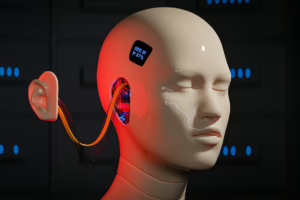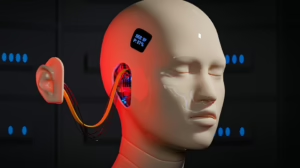Demystifying AI: A Clear Definition for the Curious Mind
Introduction
Artificial Intelligence (AI) has emerged as one of the most transformative technologies of our time. From personal assistants like Siri and Alexa to more complex systems driving autonomous vehicles, the scope and influence of AI are immense. Yet, despite its prevalence, many people remain confused about what AI truly means. This article aims to demystify AI by providing a clear and concise definition while exploring its various facets and applications.
Understanding the Basics of AI
What is AI?
At its core, Artificial Intelligence refers to the simulation of human intelligence in machines programmed to think and learn like humans. This involves a spectrum of technologies, including machine learning (ML), natural language processing (NLP), robotics, and computer vision…
Historical Context
The concept of AI isn’t new; it has roots dating back to the mid-20th century. The term “artificial intelligence” was first coined by John McCarthy in 1956 during the Dartmouth Conference, which is often considered the birthplace of AI as a field of study. Early AI systems were primarily rule-based, relying on predefined rules to make decisions. As computational power increased, so did the sophistication of AI systems…
Categories of AI
To better understand AI, it’s helpful to categorize it into specific types.
Narrow AI vs. General AI
-
Narrow AI: Also known as weak AI, this type of AI is designed for a specific task. An example includes recommendation engines on streaming platforms like Netflix or Spotify. Narrow AI can outperform humans in particular tasks, but it lacks generalization abilities.
-
General AI: Often referred to as strong AI, this type of AI would possess the ability to perform any intellectual task that a human can do. General AI remains largely theoretical and is a topic of ongoing research…
Reactive Machines, Limited Memory, Theory of Mind, and Self-Aware AI
AI can also be categorized based on its functionality:
-
Reactive Machines: These AI systems can respond to specific stimuli but lack the ability to learn from past experiences. A classic example is IBM’s Chess-playing program, Deep Blue.
-
Limited Memory: These systems can learn from historical data to make decisions. Self-driving cars utilize limited memory to analyze past driving patterns for navigation.
-
Theory of Mind: This is still an emerging area, where machines would understand human emotions and social cues.
-
Self-Aware AI: This type would have consciousness and self-awareness, allowing it to understand its existence. This remains largely speculative and has not been achieved…
Machine Learning and Deep Learning
Machine Learning: A subset of AI, ML allows systems to learn from data and improve over time without explicit programming. It relies on algorithms to identify patterns in data.
Deep Learning: A subtype of machine learning that employs neural networks with many layers. Deep learning has been pivotal in advancing fields such as image and speech recognition…
Applications of AI
AI has applications across various fields, including:
-
Healthcare: AI systems can analyze medical data to assist in diagnosis, personalize treatment plans, and even predict potential health issues.
-
Finance: AI algorithms are used for fraud detection, risk management, and automating trading.
-
Transportation: Self-driving technology is one of the most discussed applications, with companies like Tesla and Waymo leading the way.
-
Retail: AI enhances customer experience by personalizing recommendations and improving inventory management.
-
Education: AI can tailor learning experiences to individual student needs, paving the way for personalized education…
Ethical Considerations
As AI continues to grow, so do ethical concerns:
-
Bias: AI systems can perpetuate existing biases in data, leading to unfair outcomes.
-
Privacy: The extensive data collection required for AI raises concerns over individual privacy.
-
Employment: Automation through AI can displace jobs, leading to economic and social ramifications.
To address these challenges, organizations must implement responsible AI practices that ensure fairness, accountability, and transparency…
The Future of AI
As AI technologies continue to advance, we can expect to see even more innovative applications. From enhancing human capabilities to solving complex global issues, the potential of AI is limitless. However, the need for regulations, guidelines, and ethical considerations will become increasingly important as its impact expands…
Conclusion
Understanding AI need not be a daunting task. By breaking it down into its core components and applications, we can appreciate the profound impact it has on our lives. As we look to the future, staying informed and engaged with AI developments will be crucial for harnessing its potential responsibly.
Footnotes
- John McCarthy, “Defining AI” at the Dartmouth Conference (1956).
- Stuart Russell and Peter Norvig, “Artificial Intelligence: A Modern Approach,” 4th Edition, Prentice Hall.
- Ian Goodfellow et al., “Deep Learning,” MIT Press.
- “The Ethics of Artificial Intelligence and Robotics,” Stanford Encyclopedia of Philosophy.
This succinct overview endeavors to clarify the complexities of Artificial Intelligence for the curious mind, providing a starting point for deeper exploration into this fascinating field. Each section can be expanded with more details, case studies, and examples to reach the desired length of an article while maintaining clarity and engagement for readers.


























Add Comment